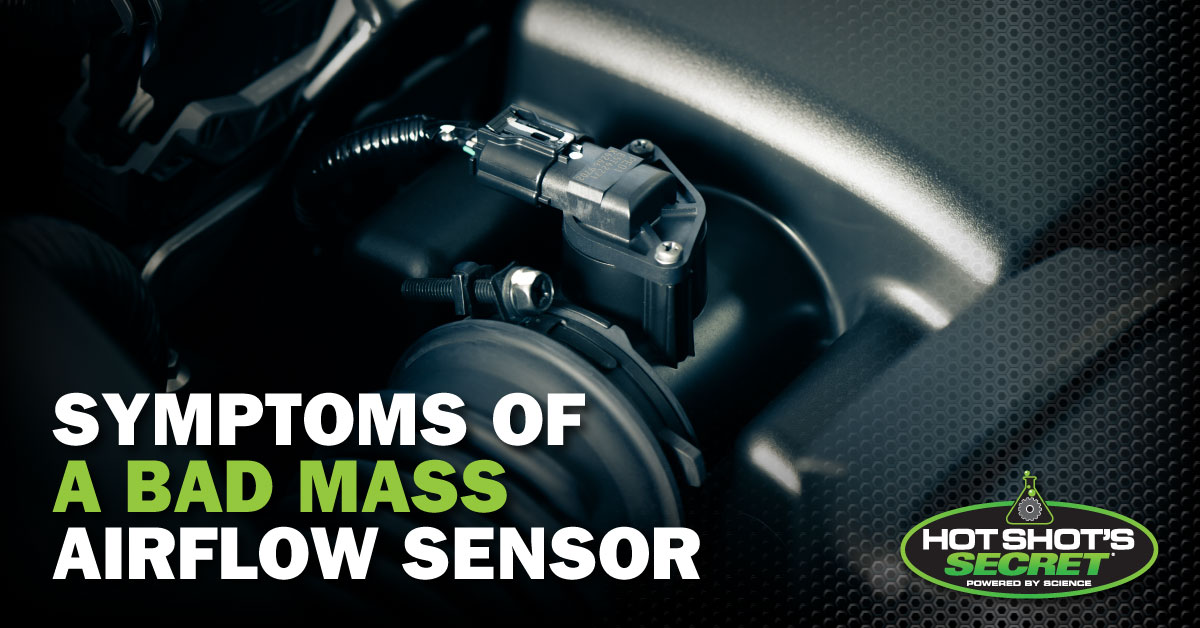
When your vehicle starts acting up, pinpointing the culprit can feel like searching for a needle in a haystack. One often overlooked component is the mass airflow (MAF) sensor. Knowing the signs of a bad MAF sensor can help you get back on the road without more costly repairs and downtime.
Let’s examine some of the most common mass airflow sensor problems, their causes and how to tell if your sensor is bad.
5 Common Symptoms of a Bad MAF Sensor
The MAF sensor is critical in regulating your vehicle’s air-fuel mixture. When it malfunctions, the results can vary widely.
1. Hesitation or Jerking During Acceleration
A bad MAF sensor can disrupt the combustion chamber’s balance between air and fuel, causing your engine to hesitate or jerk when you press the accelerator. This issue happens because the sensor sends inaccurate data to the engine control module (ECM), which struggles to deliver the correct fuel mixture. If you’ve felt a sudden jolt while merging onto the highway or towing a heavy load, you could have mass airflow sensor problems.
2. Increased Fuel Consumption
An unexpected rise in fuel consumption can quickly drain your wallet and signal deeper engine issues. When the MAF sensor fails to measure airflow accurately, it causes an imbalanced air-fuel ratio that leads to inefficient fuel use:
- Air-fuel ratio too rich: In this scenario, the engine receives more fuel than is needed for the air entering the combustion chamber. Excess fuel may burn incompletely, leading to black exhaust smoke, reduced fuel economy and residue buildup on vital engine parts.
- Air-fuel ratio too lean: In this case, the MAF sensor underestimates the amount of airflow, causing the engine to run with less fuel than necessary. Though fuel consumption might temporarily improve, power delivery suffers, and internal components experience more stress. Symptoms of a lean air-fuel ratio include engine hesitation, surging and difficulty starting, especially in colder climates.
3. Rough or Uneven Idling
A stable idle depends on precise control of the air-fuel mixture. When the MAF sensor sends faulty airflow measurements, the engine computer struggles to keep the idle smooth. Inaccurate readings lead to inconsistent combustion events, causing vibrations, shaking or stalling at stoplights and in traffic. Persistent rough idling can lead to more significant engine performance issues.
4. Check Engine Light (CEL)
Abnormal readings from a faulty MAF sensor trigger the CEL, signaling that the engine control module (ECM) has detected irregularities. Though the CEL might point to multiple issues, a failing MAF sensor is a common culprit. Checking for airflow-related diagnostic trouble codes can quickly narrow down the problem.
5. Poor Acceleration and Power Loss
A malfunctioning mass airflow sensor can cause noticeable power loss, especially during acceleration or heavy towing. The ECM struggles to deliver the necessary fuel without accurate airflow data, leaving your engine underpowered and sluggish. This issue can be particularly dangerous when you need reliable acceleration.
MAF Sensor Problems Explained — Causes and Why They Occur
Understanding the root causes of MAF sensor problems is essential for effective troubleshooting and maintenance. Here are the primary factors that may contribute to MAF sensor failure:
- Dirt or debris on the sensor: Environmental contaminants like dirt and debris can accumulate on the MAF sensor, obstructing its ability to measure airflow accurately. This buildup disrupts the sensor’s functionality, leading to incorrect air-fuel mixture calculations and subsequent engine performance issues.
- Oil contamination: Oil from the engine can coat the MAF sensor, particularly when air filters are poorly fitted. This oil covering impairs the sensor’s ability to detect airflow accurately, causing it to send misleading data to the ECM and disrupting the engine’s fuel management system.
- A worn or damaged MAF sensor: Continuous exposure to extreme temperatures, vibrations and contaminants wears down the MAF sensor. Over time, it degrades the sensor’s components, leading to faulty readings and compromised engine performance.
- Wiring or connection issues: Loose or corroded connections can disrupt communication between the sensor and ECM, creating mass airflow sensor problems.
- Vacuum leaks or air filter problems: A vacuum leak or clogged air filter distorts the MAF sensor’s readings by altering the actual airflow entering the engine. These discrepancies cause the sensor to send incorrect data to the power control module (PCM), disrupting the air-fuel balance and impairing overall engine performance.
How Hot Shot’s Secret’s Products Can Help Resolve MAF Sensor Issues
MAF sensor problems require robust solutions to restore your engine’s efficiency and longevity. Hot Shot’s Secret offers a range of products that clean and maintain your engine’s fuel and air intake systems, ensuring optimal performance:
- Everyday Diesel Treatment (EDT): EDT is a daily-use fuel additive that helps clean and lubricate the fuel system, preventing carbon buildup and keeping your MAF sensor free from soot and other contaminants. It improves fuel efficiency and ensures accurate airflow readings with a cetane boost improve diesel combustion efficiency.
- Diesel Extreme: Diesel Extreme removes stubborn deposits from the entire fuel system. This thorough cleaning process reduces the risk of residue-related airflow measurement problems. A cleaner system translates into more reliable data for the MAF sensor, sharper throttle response and improved overall engine efficiency.
Enhance Your Engine’s Performance Today
Addressing the symptoms of a bad MAF sensor as soon as they emerge protects the engine’s health and your investment. Hot Shot’s Secret products target the underlying factors that disrupt accurate airflow measurement, offering a path back to reliable, efficient operation. Contact us today to learn more about how you can achieve a smoother, more efficient driving experience.
